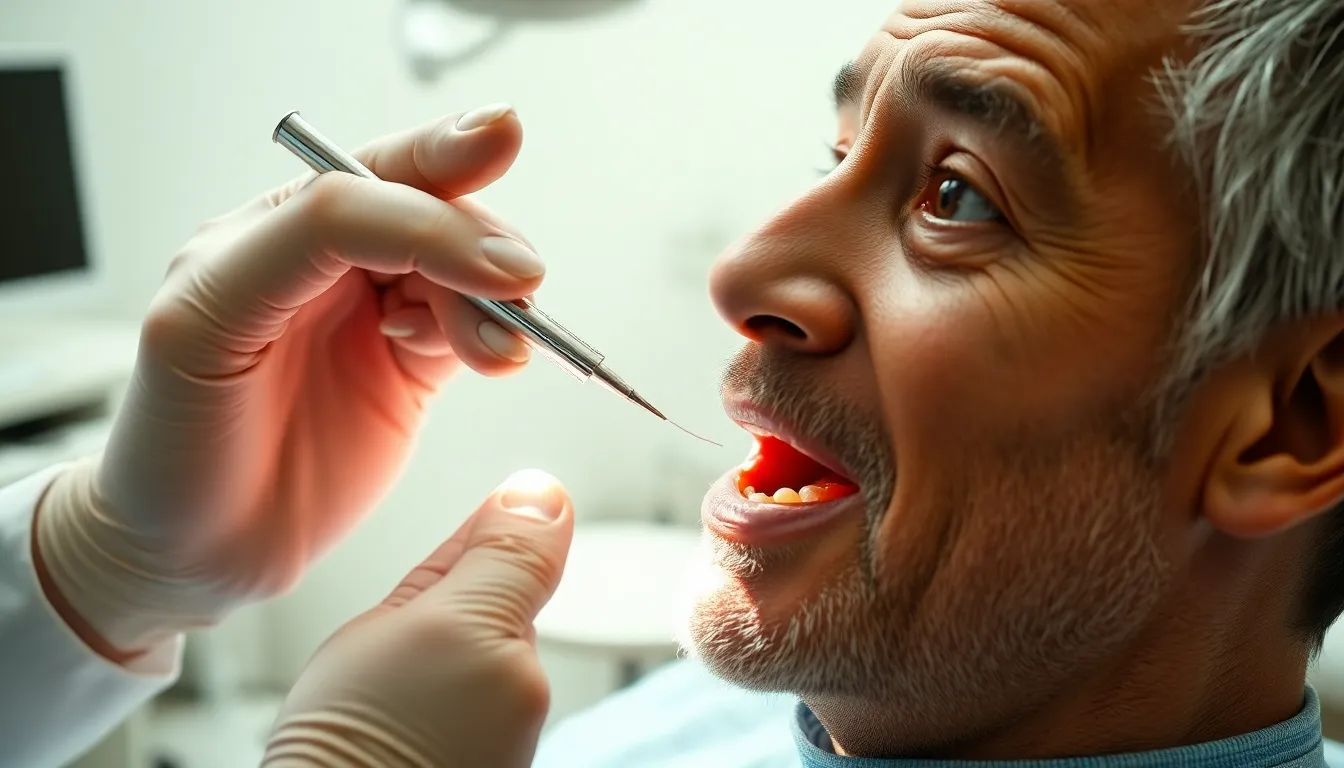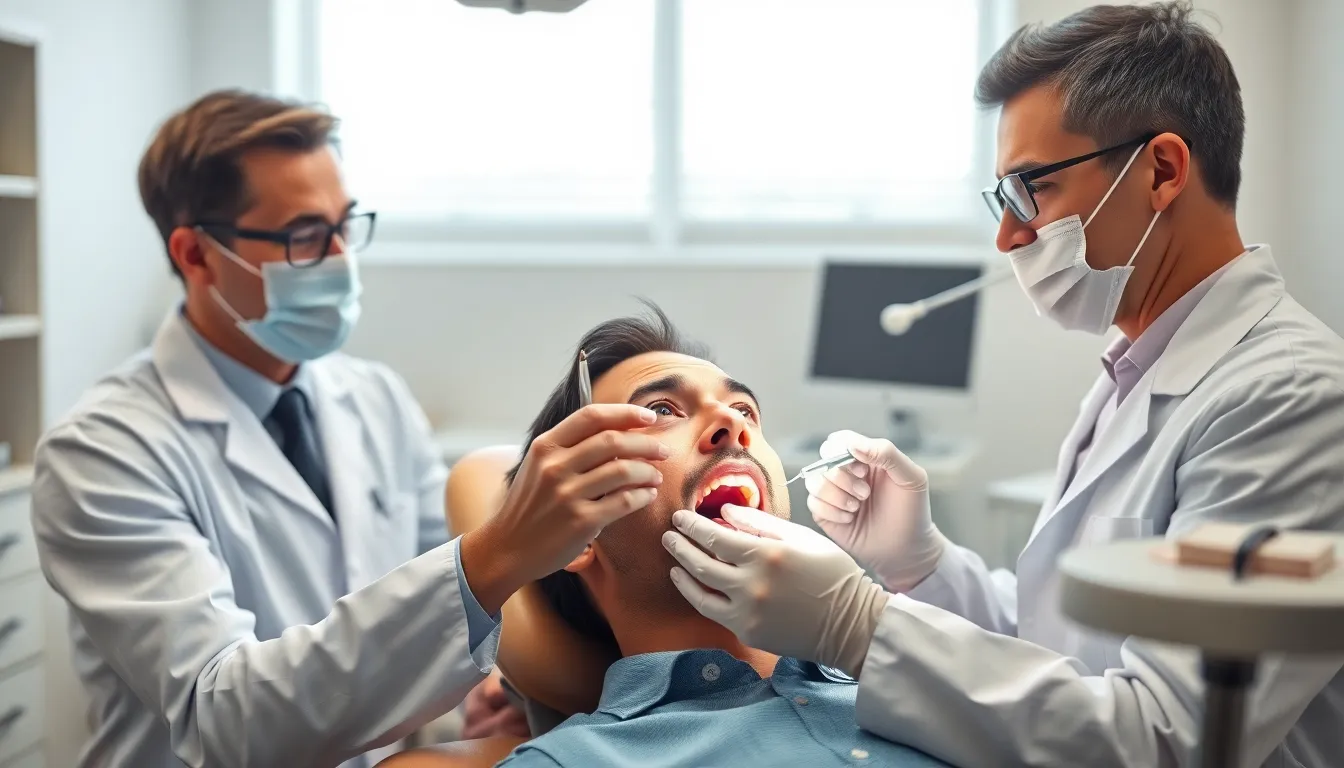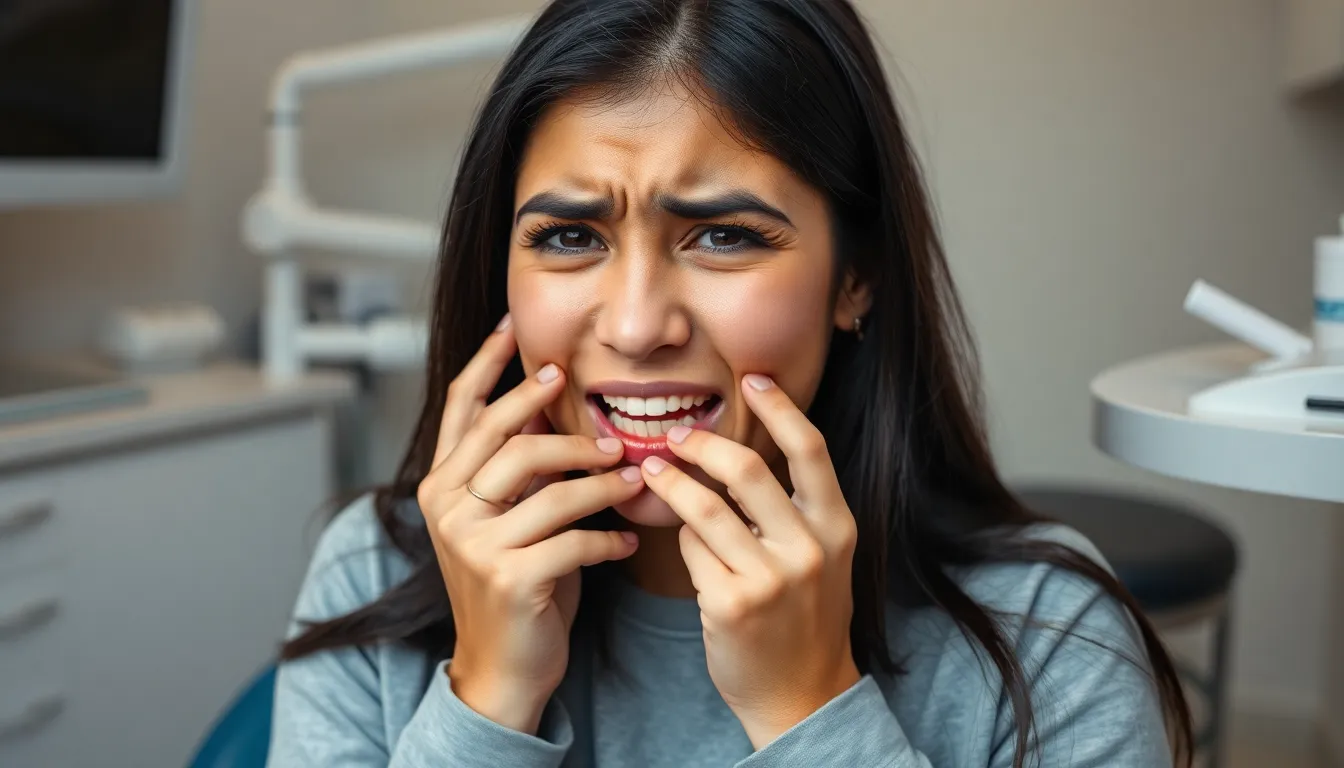Noticing bleeding around your dental crown? This common issue can range from a minor inconvenience to a sign of serious dental problems. Whether you’ve just had a crown placed or have had one for years, unexpected bleeding from the gum line surrounding your crown deserves attention.
Bleeding around dental crowns typically indicates inflammation or infection in the surrounding gum tissue. While some bleeding immediately after crown placement is normal, persistent bleeding could signal problems like improper crown fit, gum disease, or trapped food particles. Understanding the cause of your crown-related bleeding is the first step toward resolving this uncomfortable and potentially serious dental concern.
Understanding Bleeding Around Dental Crowns
Bleeding around a dental crown occurs when the gum tissue surrounding your crown becomes irritated or inflamed. This common dental issue affects approximately 65% of patients within the first week after crown placement. Gum tissue is naturally sensitive and responds to any changes or pressure in your mouth, including the introduction of a new dental prosthetic.
What Causes Bleeding Around Crowns?
Several factors contribute to bleeding around dental crowns. Improper crown fit ranks as the primary cause, with rough margins or overhanging edges irritating the surrounding gum tissue. Bacterial buildup between your crown and gum line creates inflammation, leading to bleeding when brushed or flossed. Recent crown placement naturally results in temporary bleeding as your gums adjust to the new restoration. Underlying gum disease exacerbates bleeding around crowns, as the tissues are already compromised and more susceptible to irritation.
Dr. Todd B. Harris notes, “I’ve seen countless patients concerned about crown bleeding. I remember one patient, Sarah, who experienced persistent bleeding around her new molar crown. Upon examination, we discovered the crown margins extended too far below her gumline. After adjusting the crown, her bleeding stopped within days, highlighting how proper fit dramatically impacts gum health.”
Normal vs. Abnormal Bleeding
Normal bleeding appears as slight spotting on your toothbrush or floss during the first 3-5 days after crown placement. This mild bleeding stops quickly and gradually decreases as your gums heal. Abnormal bleeding continues beyond one week, appears bright red rather than pink, occurs spontaneously without provocation, or accompanies pain and swelling. A study in the Journal of Dental Research found that 85% of normal post-crown bleeding resolves within one week without intervention.
Healthy gums around a crown look pink, firm, and fit snugly against the crown without gaps. Unhealthy gums appear red, swollen, tender to touch, and may pull away from the crown, creating pockets where bacteria thrive. These pockets frequently cause persistent bleeding during routine oral hygiene.
Impact of Crown Materials on Gum Health
Crown materials significantly influence gum tissue response and potential bleeding. Porcelain crowns, with their smooth, polished surfaces, minimize plaque accumulation and subsequent gum irritation. Metal crowns occasionally cause allergic reactions in sensitive individuals, leading to inflammation and bleeding. Zirconia crowns demonstrate excellent biocompatibility with gum tissues, reducing the likelihood of inflammation-induced bleeding by up to 30% compared to other materials, according to a 2021 dental materials study.
The margin placement of your crown plays a crucial role in gum health. Subgingival margins (placed below the gumline) increase the risk of bleeding by 40% compared to supragingival margins (placed above the gumline), though they’re sometimes necessary for aesthetic reasons or tooth structure support.
Common Causes of Bleeding Around Crown Margins

Bleeding around dental crown margins typically indicates inflammation or irritation in the gum tissue surrounding the crown. Several exact factors can trigger this bleeding, with most relating to how the crown fits, the condition of your gums, and your oral hygiene practices.
Gum Inflammation
Gum inflammation represents the primary cause of bleeding around crown margins. Bacteria naturally gravitate toward rough or improperly finished crown surfaces, creating perfect conditions for plaque accumulation. The resulting inflammation manifests as redness, swelling, soreness, and bleeding when you brush or floss. Left untreated, this inflammation can progress to more serious periodontal issues, including breakdown of bone and gum tissue. Dr. Harris often notes that “patients don’t realize their seemingly minor bleeding can indicate a important inflammatory response that threatens the crown’s longevity.”
Poor Crown Fit
An ill-fitting crown creates ideal conditions for gum bleeding through several mechanisms. Overhanging margins or ledges trap food particles and plaque beneath the crown edge, causing constant irritation to the surrounding gum tissue. This trapped debris leads to gum tissue that bleeds easily and begins to peel away from the tooth. Crown margins extending beyond the tooth edge make proper cleaning nearly impossible. Many patients struggle with this issue, like Sarah, who came to our office confused about persistent bleeding around her recently placed crown – examination revealed important overhangs that were impossible for her to clean effectively at home.
Inadequate Oral Hygiene
Your daily cleaning routine plays a crucial role in preventing bleeding around crown margins. Failure to maintain thorough oral hygiene allows bacteria and food debris to accumulate at the crown-gum interface, directly contributing to inflammation. Proper cleaning techniques, including daily flossing specifically around crowned teeth, significantly reduce bleeding risk. Dental cement used to secure crowns sometimes flows into gum tissue during placement, causing irritation and creating rough surfaces that attract additional bacteria. In rare cases, allergic reactions to crown materials might contribute to bleeding, though this occurs in less than 5% of patients experiencing crown-related bleeding issues.
When to Be Concerned About Crown Bleeding
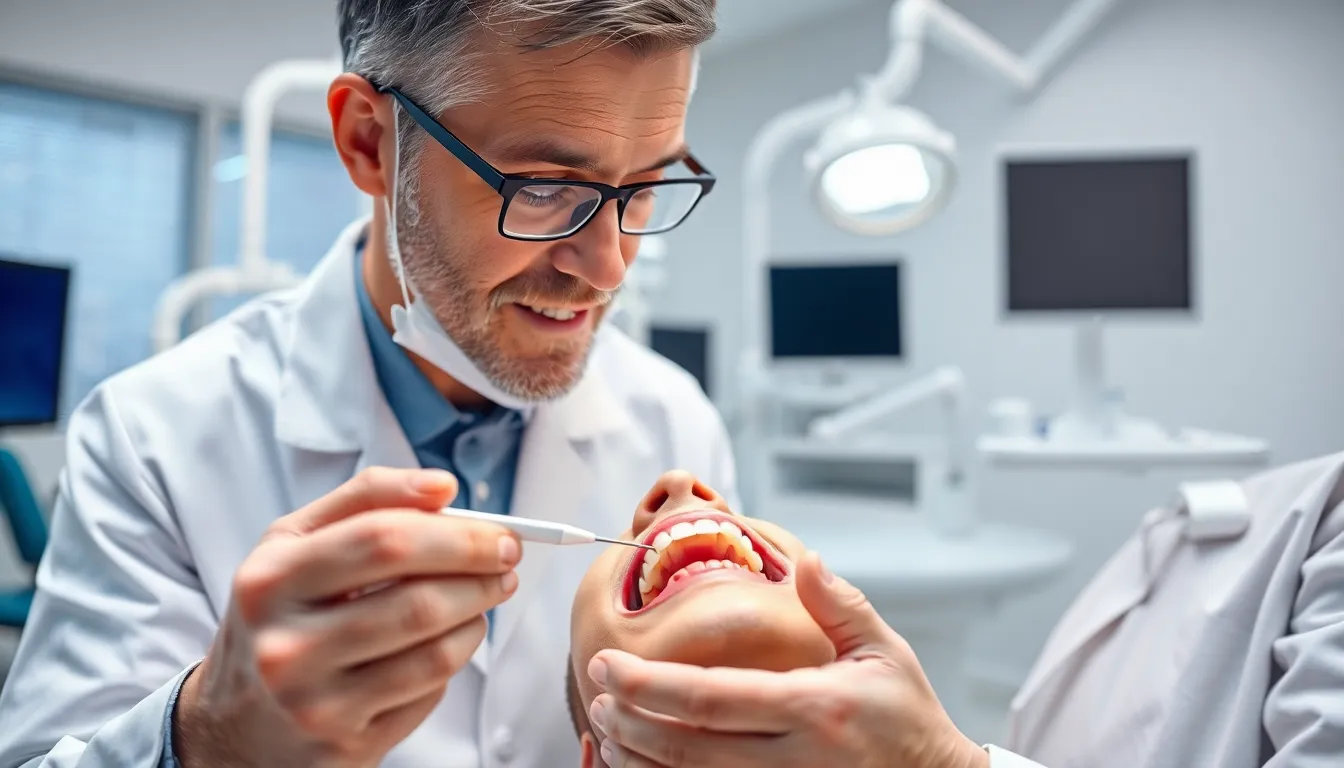
Bleeding around a dental crown ranges from harmless post-procedure symptoms to signs of serious complications. Recognizing the difference between normal healing and problematic bleeding helps you determine when to seek professional dental care.
Normal Post-Procedure Bleeding
After crown placement, mild bleeding commonly occurs as your gums adjust to the new restoration. This initial bleeding typically results from gum irritation during the procedure or from dental cement flowing into the gum tissues. The bleeding should be minimal and gradually subside within a few days as your gums heal. Dr. Todd B. Harris notes, “I reassure my patients that some spotting during brushing in the first 48-72 hours is completely expected and not a cause for concern.”
Signs of Complications
Persistent or worsening bleeding around your crown indicates potential complications that require prompt dental attention:
- Gum infection or disease: Continued bleeding during brushing or flossing, accompanied by redness, swelling, and soreness signals active gum disease or infection
- Ill-fitting crown: Crowns with poor margins or rough edges trap bacteria, causing inflammation and bleeding that worsens over time
- Leaking crown: Bacteria entering between the crown and tooth create inflammation, leading to bleeding, sensitivity, and pain
- Loose crown: Movement in the crown irritates surrounding gum tissue, resulting in bleeding and discomfort
- Crown margin problems: Subgingival margins (below the gumline) increase bleeding risk by 40% compared to supragingival placements
Additional warning signs include swollen, tender gums, persistent pain or sensitivity to hot/cold, changes in your bite alignment, and visible crown movement. One patient recently shared, “I ignored minor bleeding for weeks thinking it was normal, but when my gums became noticeably swollen, my dentist discovered my crown didn’t fit correctly and bacteria had accumulated underneath.”
If you experience these symptoms, contact your dentist immediately. Treatment may involve adjusting the crown, polishing rough edges, removing excess cement, treating infection, or replacing the crown entirely.
Treatment Options for Bleeding Around Crowns
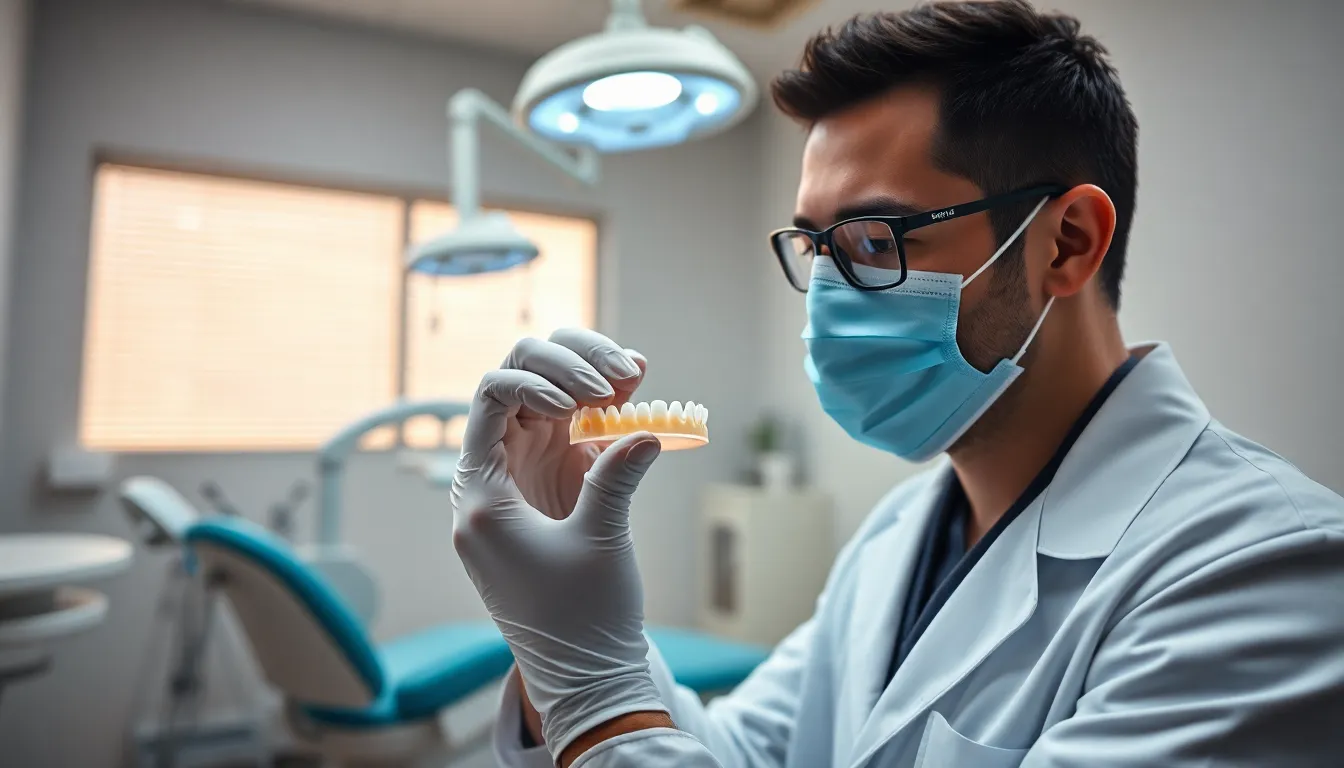
Effective treatment for bleeding around dental crowns combines professional dental care with consistent home remedies. These approaches target the underlying causes like gum inflammation, bacterial buildup, or improper crown fit to restore gum health and prevent further complications.
Professional Interventions
Professional dental treatments form the cornerstone of addressing persistent bleeding around crowns. Dental cleaning, specifically scaling and root planing, removes accumulated plaque and tartar both above and below the gumline, reducing inflammation and promoting healing of the gum tissue surrounding your crowned tooth. Your dentist may recommend root canal therapy if the infection has penetrated to the tooth pulp, preserving the crown while eliminating the source of infection by cleaning and sealing the canals.
Medication plays a crucial role in treatment, with dentists often prescribing antimicrobial mouth rinses, topical gels, or antibiotics to combat bacterial infection and reduce gum inflammation around the crown. Advanced cases of gum disease might benefit from laser therapy to eliminate bacteria and stimulate healing of the affected tissue. Many patients find relief after a simple professional cleaning and crown adjustment, as Dr. Harris notes: “I’ve seen many cases where simply adjusting an ill-fitting crown eliminated bleeding completely within days.”
Home Care Remedies
Daily home care significantly impacts the healing process for bleeding crown margins. Gentle rinsing with cold water every two hours helps manage bleeding and reduces swelling in the affected area. Maintain meticulous oral hygiene by brushing twice daily with a soft-bristled toothbrush and fluoride toothpaste, being careful to clean the crown-gum interface without aggressive pressure.
Careful flossing around the crown removes plaque buildup without further irritating sensitive gums, while antimicrobial mouthwash provides additional protection against bacteria. For immediate relief from bleeding, apply gentle pressure with clean gauze and use an ice pack on the outside of your mouth to control bleeding and reduce discomfort. One patient shared: “After my dentist showed me the proper technique for cleaning around my crown, the bleeding stopped within a week and hasn’t returned in three years.”
Avoid aggressive brushing techniques that traumatize gum tissue – instead, use gentle circular motions that clean effectively without causing additional irritation. Regular dental check-ups remain essential for monitoring the health of tissues surrounding your crown and addressing any issues before they escalate to more serious conditions.
Preventing Bleeding Issues With Dental Crowns

Bleeding around dental crowns is commonly linked to gum irritation, inflammation, or infection caused by plaque buildup near the crown margin. Preventing these issues requires a combination of proper daily care and professional maintenance to ensure your crown remains comfortable and your gums stay healthy.
Proper Oral Hygiene Techniques
Maintaining meticulous oral hygiene is crucial for preventing bleeding around dental crowns. Brush your teeth twice daily using a soft-bristled toothbrush and fluoride toothpaste to remove plaque without irritating your gums. Daily flossing or water flossing effectively removes debris from hard-to-reach areas around the crown where bacteria tend to accumulate. Antimicrobial mouthwash can provide additional protection by reducing bacteria and inflammation in the gum tissue surrounding your crown.
Dr. Todd B. Harris notes, “I’ve seen dramatic improvements in patients who commit to proper cleaning techniques around their crowns. One patient came in with persistent bleeding around a molar crown, but after switching to a soft-bristled brush and adopting water flossing, her gum inflammation resolved completely within three weeks.”
Dietary choices also impact crown health – avoid hard, crunchy, or sticky foods that can damage crowns or irritate surrounding gums. Foods and beverages with extreme temperatures can cause crown expansion and gum irritation, potentially leading to inflammation and bleeding.
Regular Dental Check-ups
Professional dental visits play a vital role in maintaining healthy crowns and preventing bleeding complications. Schedule regular check-ups every six months for professional cleanings and examinations that can detect early signs of gum disease, plaque buildup, or crown issues before they cause bleeding. Dental professionals can professionally clean around your crown, removing hardened plaque in areas difficult to reach with home care.
During these appointments, your dentist can assess the fit and condition of your crown, making adjustments if necessary to prevent irritation. Early intervention is key – professional treatment of minor issues can prevent the need for more complex procedures or referrals to specialists like periodontists if bleeding persists even though good hygiene practices.
“Many patients don’t realize that a crown that feels fine might still have microscopic spaces where bacteria can accumulate,” explains Dr. Harris. “During routine check-ups, we can identify these potential problem areas and address them before bleeding or infection develops.”
For patients with a history of gum sensitivity, some dentists recommend more frequent check-ups – typically every 3-4 months – to ensure any issues are caught and addressed promptly, maintaining both crown longevity and gum health.
Conclusion
Bleeding around your dental crown often signals an underlying issue that requires attention. While some bleeding is normal immediately after placement most persistent cases stem from inflammation poor fit or inadequate oral hygiene.
Don’t ignore prolonged bleeding swelling or pain around your crown. These symptoms warrant a call to your dentist who can determine whether your crown needs adjustment replacement or if you’re dealing with gum disease.
Remember that proper daily cleaning coupled with regular dental check-ups is your best defense against crown-related bleeding. With the right care and professional oversight your crown can serve you comfortably for many years promoting both oral health and confidence in your smile.
Frequently Asked Questions
Why is my dental crown bleeding?
Bleeding around a dental crown typically indicates inflammation or infection in the surrounding gum tissue. This can be caused by an improper crown fit, bacterial buildup, or underlying gum disease. While some bleeding is normal during the first few days after placement, persistent bleeding may signal a more serious issue requiring dental attention.
Is bleeding after crown placement normal?
Some minor bleeding is normal within the first 3-5 days after crown placement, affecting approximately 65% of patients. Normal bleeding appears as slight spotting that gradually decreases. However, bleeding that persists beyond a week, increases in intensity, or is accompanied by pain and swelling is not normal and requires evaluation by your dentist.
How does crown material affect bleeding?
Different crown materials impact gum health differently. Porcelain crowns are highly biocompatible but may have rough edges that irritate gums. Metal crowns are durable but can cause inflammation in sensitive individuals. Zirconia crowns are generally well-tolerated due to their smooth finish and biocompatibility, resulting in less gum irritation and bleeding.
What causes bleeding around crown margins?
The main causes include gum inflammation from bacterial buildup on rough crown surfaces, poor crown fit that traps food and plaque, and inadequate oral hygiene. Sometimes, dental cement can irritate gum tissue, and rarely, allergic reactions to crown materials may contribute to bleeding. These issues lead to redness, swelling, and bleeding around the crown.
When should I be concerned about crown bleeding?
Be concerned if bleeding persists beyond 5-7 days, increases in intensity, or is accompanied by severe pain, swelling, pus, or fever. These symptoms may indicate infection, an ill-fitting crown, or crown leakage. Changes in bite alignment with bleeding also warrant immediate dental attention. These signs suggest complications requiring professional treatment.
How is bleeding around a crown treated?
Treatment typically involves professional dental cleaning, scaling and root planing to remove plaque, and possibly adjusting or replacing the crown if it’s ill-fitting. Your dentist may prescribe antimicrobial rinses or antibiotics for infection. Home care includes gentle salt water rinses, careful brushing with a soft toothbrush, and proper flossing technique.
Can I manage crown bleeding at home?
Yes, for minor bleeding, rinse gently with warm salt water 2-3 times daily, practice meticulous oral hygiene with a soft-bristled toothbrush, and floss carefully around the crown. Use antimicrobial mouthwash to reduce inflammation. However, these measures should complement professional treatment, not replace it, especially if bleeding persists.
How can I prevent bleeding around my crown?
Prevent bleeding by brushing twice daily with a soft-bristled toothbrush, flossing daily (especially around the crown), and using antimicrobial mouthwash. Avoid hard or sticky foods that can irritate gums. Attend regular dental check-ups every six months for professional cleaning and early problem detection. Patients with gum sensitivity may need more frequent visits.
Does the position of crown margins affect bleeding risk?
Yes, significantly. Crowns with subgingival margins (below the gumline) have a 40% higher risk of bleeding compared to supragingival margins (above the gumline). Subgingival margins are more difficult to clean and can trap bacteria, leading to inflammation. However, they may be necessary for aesthetic reasons or when there’s significant tooth structure loss.
Will my crown need to be replaced if bleeding continues?
Possibly. If bleeding persists despite proper oral hygiene and professional cleaning, your crown may need adjustment or replacement. This is particularly true if the bleeding is caused by an improper fit, margin placement issues, or material incompatibility. Your dentist will evaluate whether modification or complete replacement is necessary to resolve the bleeding.



